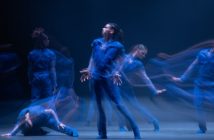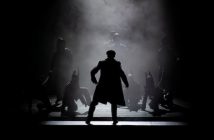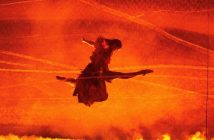Where to begin with Frederick Ashton? I have to admit a bias here. He’s my favourite English choreographer, for you could say he invented English choreography. Whilst dance is never easy to describe in words, there are certain tell tale signs with Ashton; lyricism and poise, graceful arms and delicate inclinations of the head, intricate, often dazzling footwork, a flair for story-telling and characterisation, and an almost unique mastery of balletic slapstick.
It’s a million miles away from the clean, austere classicism of his contemporary Balanchine. It’s even further from the bravura and showmanship of the Russians. But if there’s one single facet of Ashton’s genius that stands out it’s his musicality. In Ashton’s ballets, especially the later ones, his dancers are effectively music made flesh, becoming the music by weaving its patterns, sometimes together or sometimes with each dancer picking up a different thread or nuance. For example, Rhapsody now returning to Covent Garden in the original set designed by Ashton himself, is a case in point. This is one of Ashton’s “pure dance” ballets set to the music of Rachmaninoff’s Rhapsody on a Theme of Paganini. It is by turns lyrical, dynamic, witty and romantic.

Rhapsody ©ROH
It was created in 1980 as an 80th birthday present for the Queen Mother and choreographed on Baryshnikov, at the time the most famous dancer in the world. So he could name his terms, and to dance at Covent Garden he wanted a new ballet created for him by Frederick Ashton. Ashton took Baryshnikov’s dazzling technique and, quite literally, gilded it. Not only was his costume golden, there was gold dust in his hair. Ashton was creating a god here. There were extraordinary leaps, explosive entrances and exits, bravura turns. Baryshnikov burst on to the stage in a blaze of energy and charisma, took the piece and the audience by storm and finished it off with a so-what shrug. That? he seemed to say, that was nothing, you should see me on a good day. These were always going to be hard shoes to fill.
The ensemble of six men and six women in the current production weave Ashton’s intricate musical patterns to perfection – no mean feat at any time, but especially when there are two last-minute cast changes. Francesca Hayward in the female lead was mercurial and feather light. James Hay in the male lead was dashing and poised but, for me, never quite pulled off the dazzling virtuosity and sheer presence this role cries out for.

Frederick Ashton’s The Two Pigeons, The Royal Ballet © 2015 ROH
The second piece in the double bill, The Two Pigeons, is a very different kind of Ashton ballet, a sentimental romantic comedy. It hasn’t been seen in 30 years, having been created in 1961 as a story ballet with the simplest of stories. Boy meets sweet girl, then boy meets more exotic girl, who makes a fool of him, boy returns to sweet girl and is forgiven. Ashton is not afraid of sweetness or innocence and contemporary audiences may at first find this piece a bit arch, but do stick with it. The two pigeons of the title refer both to the lovers and to a pair of real white doves that fly past their window and become a symbol of their love. There’s no escaping the bird theme. It’s there throughout, from a comic chicken-wing opening dance through to the Young Girl’s quivering feet to her heartbroken, swan-like pose, fluttering, folded over, self-protective as her lover returns.
As the Young Man, Alexander Campbell seems to grow in stature as the piece goes on and he received a rapturous response from the audience to his solo in the gypsy camp. Itziar Mendizabal was suitably dazzling and dangerous as the gypsy girl and Marcelino Sambe as a gypsy boy deserves special mention for stealing the show in the gypsy scene. Yuhui Choe as the Young Girl was by turns mischievous and poignant, like Audrey Hepburn at her most gamine – a delight. Sentimental? Certainly. But if your heart doesn’t melt in the final scene when the lovers are joined on stage by the two real doves (fine acting from them too), it must be made of stone.
Rhapsody/The Two Pigeons at the Royal Opera House until the 30th January with a live cinema relay on Tuesday 26 January 2016. For more information and tickets visit the website.




